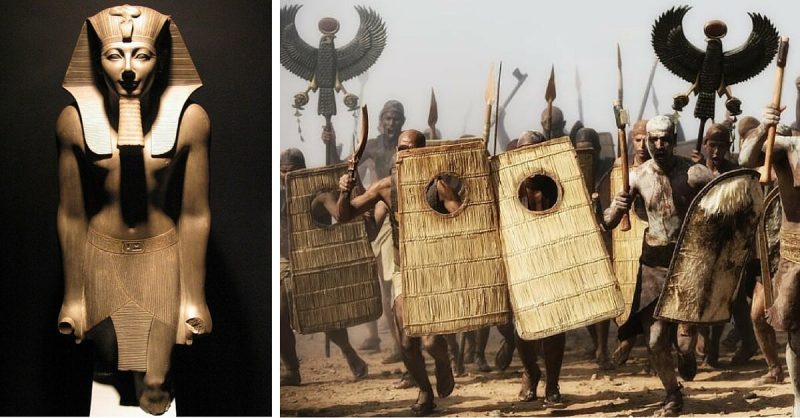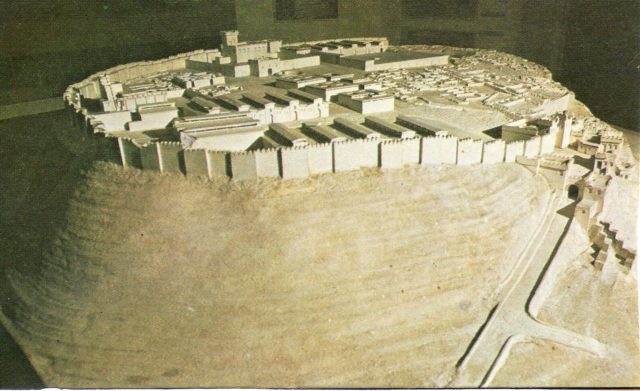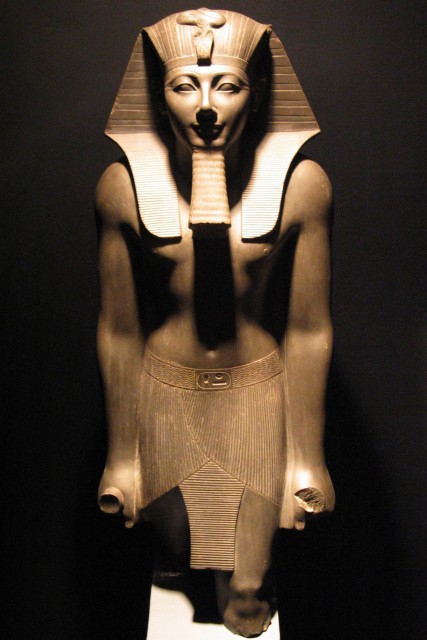
.
The Battle of
Megiddo: The Beginning of Military History
Andrew Knighton
The
first battle for which we have a clear historical record took place in the
Levant in the 15th century BC.
Though
we know that war had existed for centuries beforehand, and some details of
earlier battles are recorded in folklore and religious scripture, the details
remain cloudy.
That
changed with the Battle of Megiddo.
Dating Difficulties
Ancient Egyptian records, on which we rely for accounts of
the Battle of Megiddo, place it in Year 23 of the reign of Pharaoh Thutmose
III, on the 21st day of the first month of the third season.
Exactly
how this relates to our own dating system is uncertain, and historians have
variously dated the battle to 1457, 1479 or 1482 BC.
All
we can say with certainty is that it took place in the first half of the 15th
century BC.
War in the Levant
Thutmose III came to the throne at a time when Egypt
controlled large swathes of the Levant – the lands of the eastern Mediterranean
and the northern Middle East.
Early
in his reign, he found himself faced with a revolt in this region, based around
modern Syria.
Leading
the revolt was the King of Kadesh, a city whose strong fortress gave him a
secure base.
The
Canaanites, Mitanni, and Amurru joined his rebel alliance, as did the King of
Megiddo, another ruler with a strong fortress base.
Megiddo
was strategically vital, controlling the main trade route between Egypt and
Mesopotamia, now known as the Via Maris. The rebel forces gathered there.
Pharaoh on the March
Like many ancient rulers, Thutmose III took personal
command of his forces.
He
gathered an army of between ten and twenty thousand men, consisting of infantry
and charioteers, at the border fortress of Tjaru.
This
was the heyday of chariot warfare.
Horses
had not yet been bred strong enough to carry an armed rider, making chariots
the only way to move quickly around the battlefield and deliver sudden shock
attacks.
The
recently developed composite bow gave chariot riders a powerful weapon with
which to attack infantry before galloping away.
Iron
weapons, which would eventually lead to the downfall of the chariot
aristocracies, had not yet been developed.
At
the heart of Pharaoh’s army were the deadliest weapons of their day.
Choosing
the most direct but also most dangerous of three available routes, Thutmose
took Aruna – the area now called Wadi Ara – with almost no resistance.
The
Kadeshi army had been sent far to the north and south to block his other routes
of advance, and he could now march on Megiddo.
The
King of Kadesh, surprised by the Egyptians’ appearance in the center of his
defensive line, scrambled to gather his troops on the high ground outside the
fortress of Megiddo.
Pharaoh
gave him little time to prepare.
Opportunity Seized
Having set up camp at the end of the day, Thutmose then
advanced his forces under cover of night.
While
the Kadeshi concentrated their troops around the fortress, Pharaoh spread his
out.
Two
wings menaced the enemy flanks, while the core of the army advanced in the
center. In the morning, he attacked.
The
two sides were evenly matched in numbers, with around 10,000 infantry and 1,000
chariots each.
But
having spread out his forces, Pharaoh was better able to make use of his
numbers.
While
he led the attack in the center, his left wing made a fast, aggressive strike
against the rebel flank.
The
will of the rebel flank was quickly broken by the speed and skill of the
Egyptian attack.
The
right wing crumbled, and the rest of the army swiftly followed, morale
collapsing as warriors saw their comrades flee.
Some
ran into the city, closing the gates behind them to keep the Egyptians
out.
The
Egyptians now wasted the opportunity swift victory had given them.
Like
so many victors throughout history, they set about plundering the enemy camp,
capturing 200 suits of armor and 924 chariots.
But
while they did this the scattered rebels found their way back into Megiddo,
climbing up improvised ropes of clothing lowered by people inside the walls.
Those
who made it to safety included the kings of Megiddo and Kadesh.
Siege and Aftermath
The Battle of Megiddo was immediately followed by a siege.
Pharaoh
had his men dug a moat and built their own defensive wall around the city.
After
seven months of slow starvation, the city eventually surrendered.
The
King of Kadesh escaped, but the rest of those within the city were captured,
and spared by a merciful Pharaoh.
As
well as armor and chariots, the victors took home over 2,000 horses, 340
prisoners, nearly 25,000 cattle and sheep, and the royal war gear of the King
of Megiddo.
More
importantly, the victory at Megiddo enabled them to conquer other cities in the
region, securing it once more for the Egyptian Empire.
How We Know About Megiddo
How has this single battle become our first clear image of
the history of war?
The
answer lies with Thutmose III’s personal scribe, Tjaneni.
Accompanying
his ruler on the campaign, Tjaneni kept a daily record of the war.
Years
later, Thutmose wanted to have his military exploits carved into the walls of
the Temple to Amun-Re at Karnak.
Tjaneni’s
journal allowed the events of Megiddo to be inscribed in glorious detail, which
has lasted to us down the years.
The
Egyptian army, therefore, takes a vital place in the early history of warfare
for two reasons.
Firstly
because they had the might to reach so far, including a successful leader and the latest military
developments.
And secondly, because they recorded their exploits in a form
that would last – the ancient stones of Egypt.


No comments:
Post a Comment